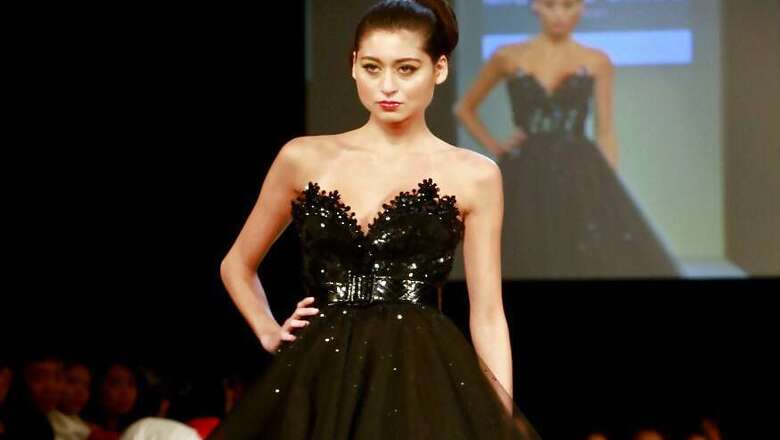
views
Fairies, brides in black and hand-knit dolls take the runway in Dubai this week for the fifth Arab Fashion Week, a five-day affair focussed on instantly available "ready couture" and pre-collections.
At the opening shows Wednesday night, ballgowns and evening gowns appeared in full force, with Lebanese designer Saher Dia showcasing a collection inspired by old Hollywood -- including a metallic-fringed dress that appeared to be a modern-day tribute to Ginger Rogers. And in a city that has become a metaphor for luxury, Filipino designer Furone One, of Dubai's Amato Couture, turned his models into fairies living the high life. "This collection is inspired by fairies -- sea fairies, all kinds of fairies, because as a child I believed in fairies," Furone told AFP backstage.
His collection did not disappoint.
The celebrity favourite, who has dressed Beyonce, Katy Perry and Heidi Klum among others, sent more than 20 models down the runway in holographic and pearl headpieces, their arms stained with green duochrome glitter, as if Tinkerbell had gone for a swim. Embroidered or beaded, gowns in muted blues, blushes and beiges were paired with voile capes and purses made from seashells in a collection that was still wearable for the Dubai crowd.
"For me, Arabs are very creative," One said. "They love to experiment, they love to explore," he added. "Here in Dubai, you have the time for luxury."
Arab Fashion Week's spring/summer 2018 season strikes a markedly different tone from the previous fall/winter season, which had a heavier focus on unisex and menswear lines.
While Aiisha Ramadan, the Lebanese designer who has garnered a dedicated following in the Gulf for her traditional aabaya robes, did embrace the unisex structured blazer, hers had blue ruffled overlays pouring out of the shoulder pads. Her "bridal" look was a galaxy-print ballgown with pockets and a black veil -- a far cry from the solid colours and long kaftans she is known for.
"The Arab client is definitely changing," Ramadan said backstage, in biker boots studded with crystals. "She's changing in the way she's thinking. She's becoming simpler, someone who wants to shine more than the dress on her."
The shows this week will also feature Mua Mua's hand-knit celebrity dolls, made in Bali by Italian designer Ludovica Virga.
Arab Fashion Week, held twice a year, showcases only see-now-buy-now collections and pre-collections, as opposed to the traditional haute-couture model in which designs are delivered only months after they are ordered.















Comments
0 comment